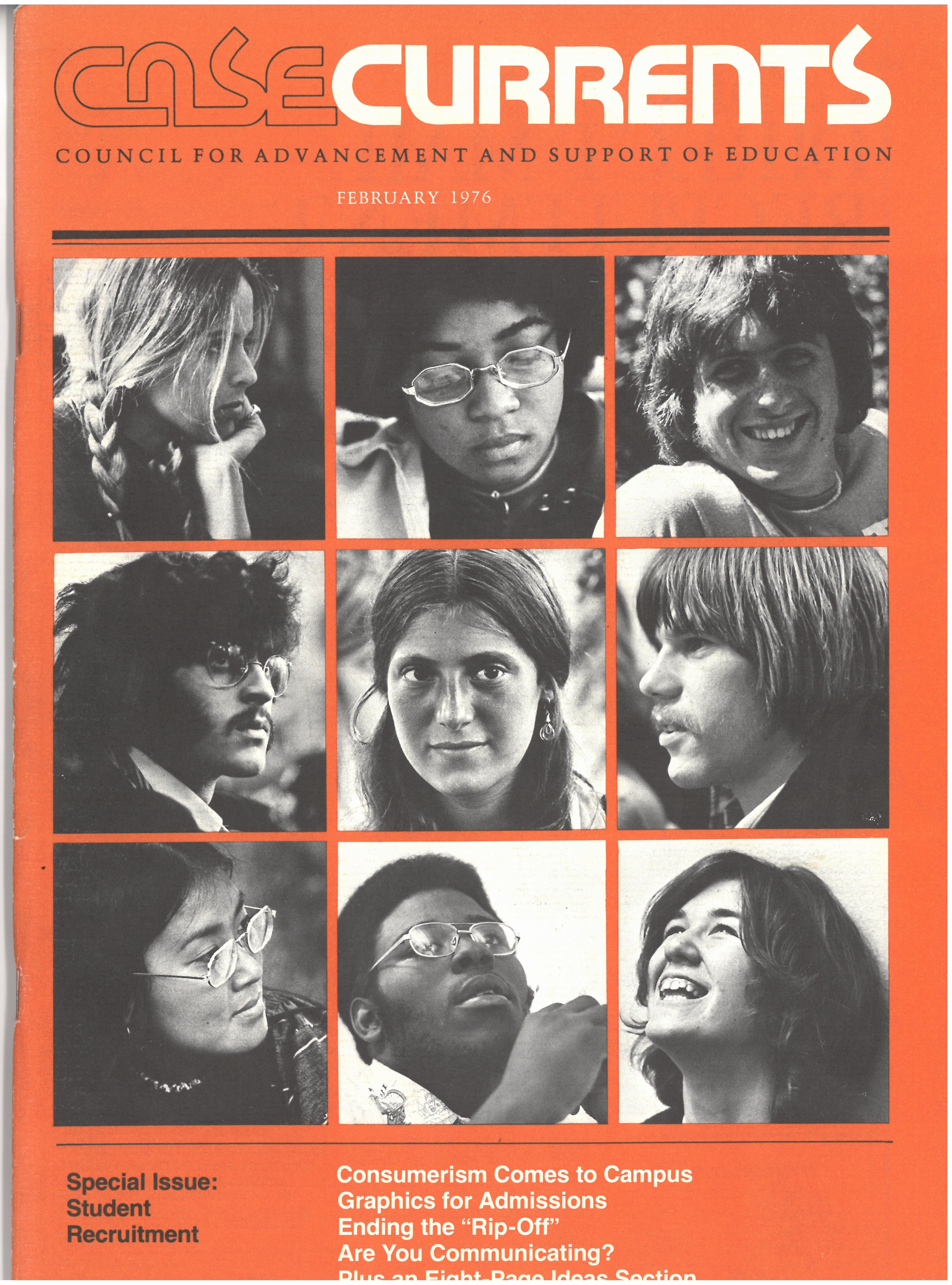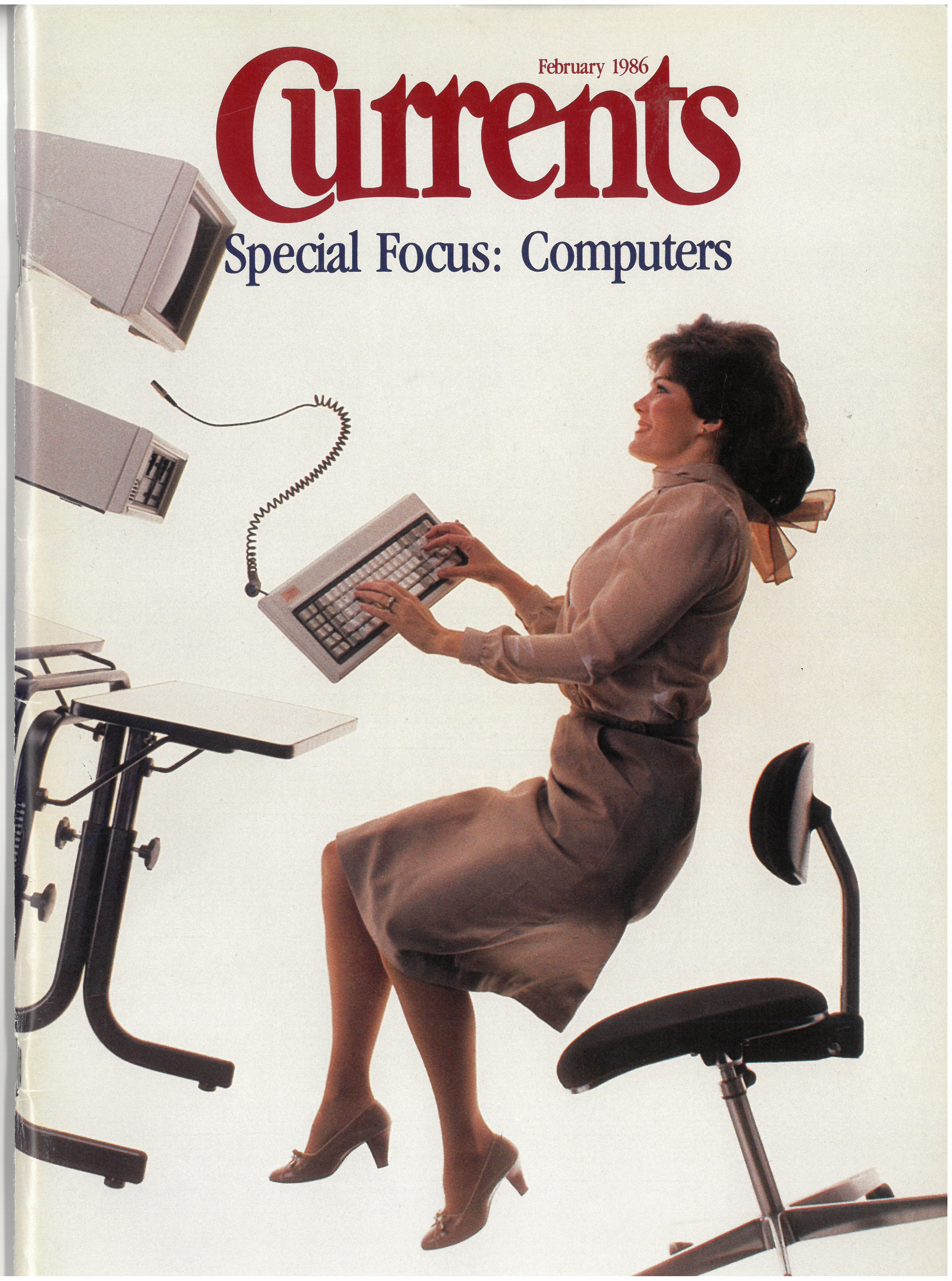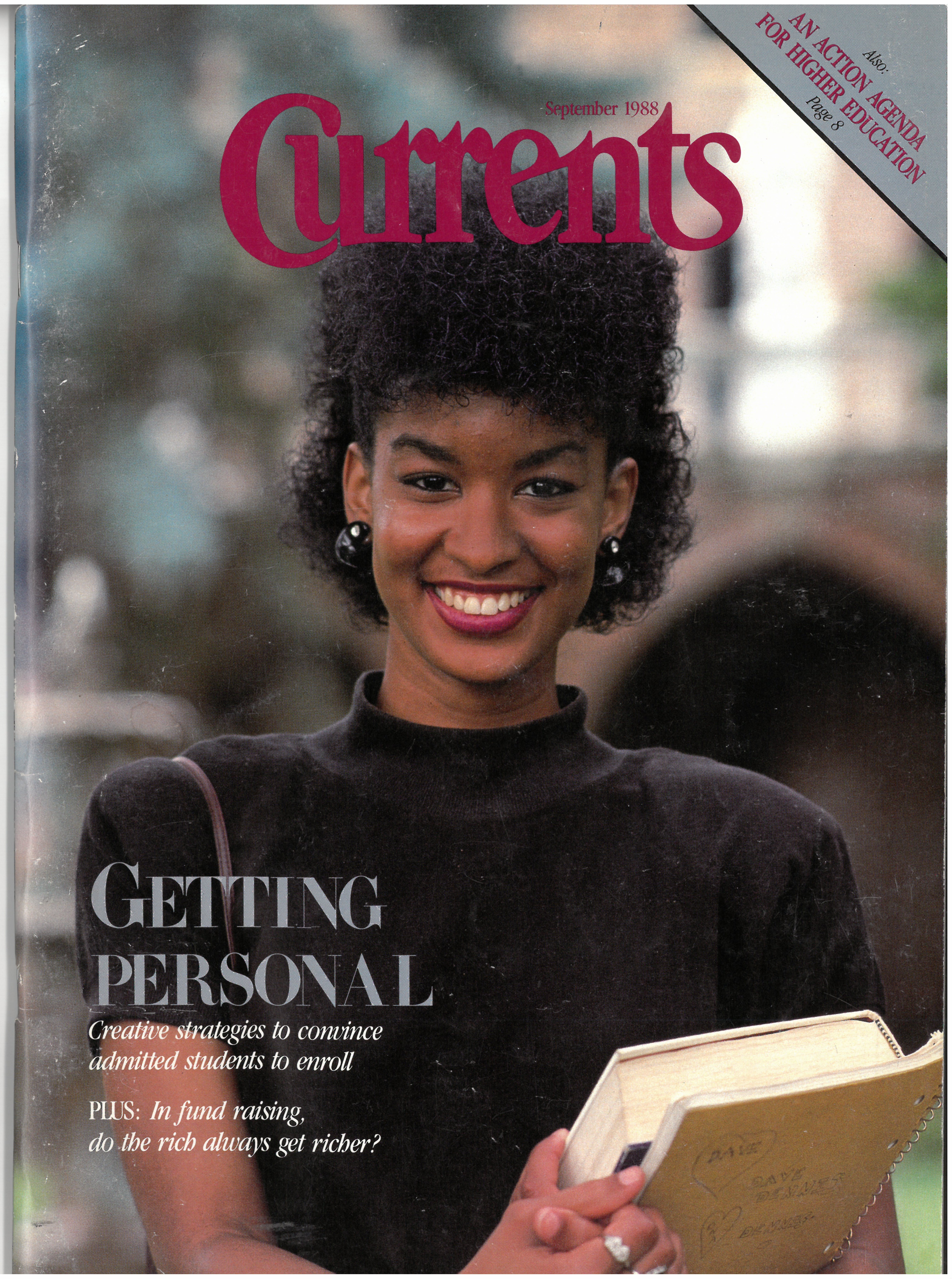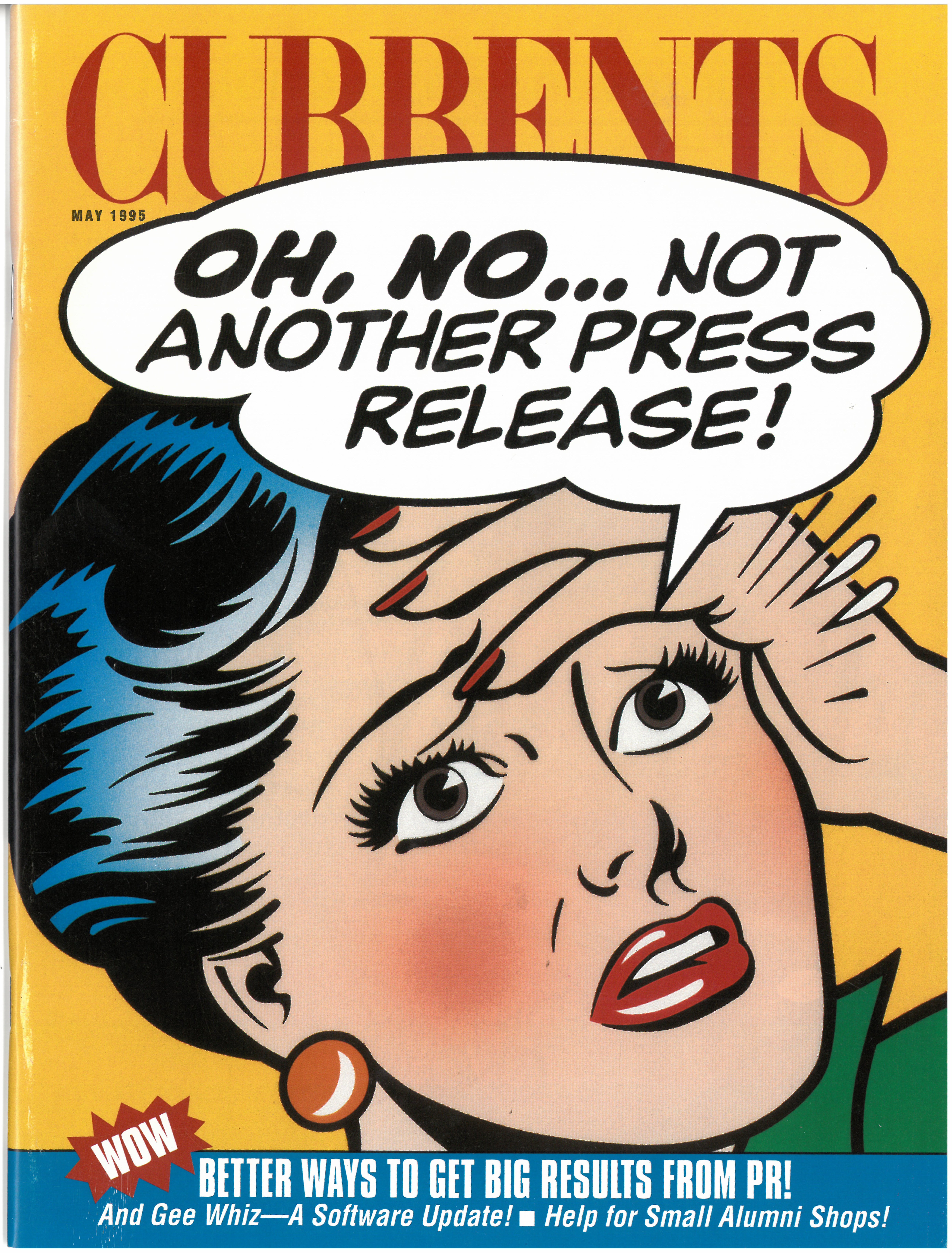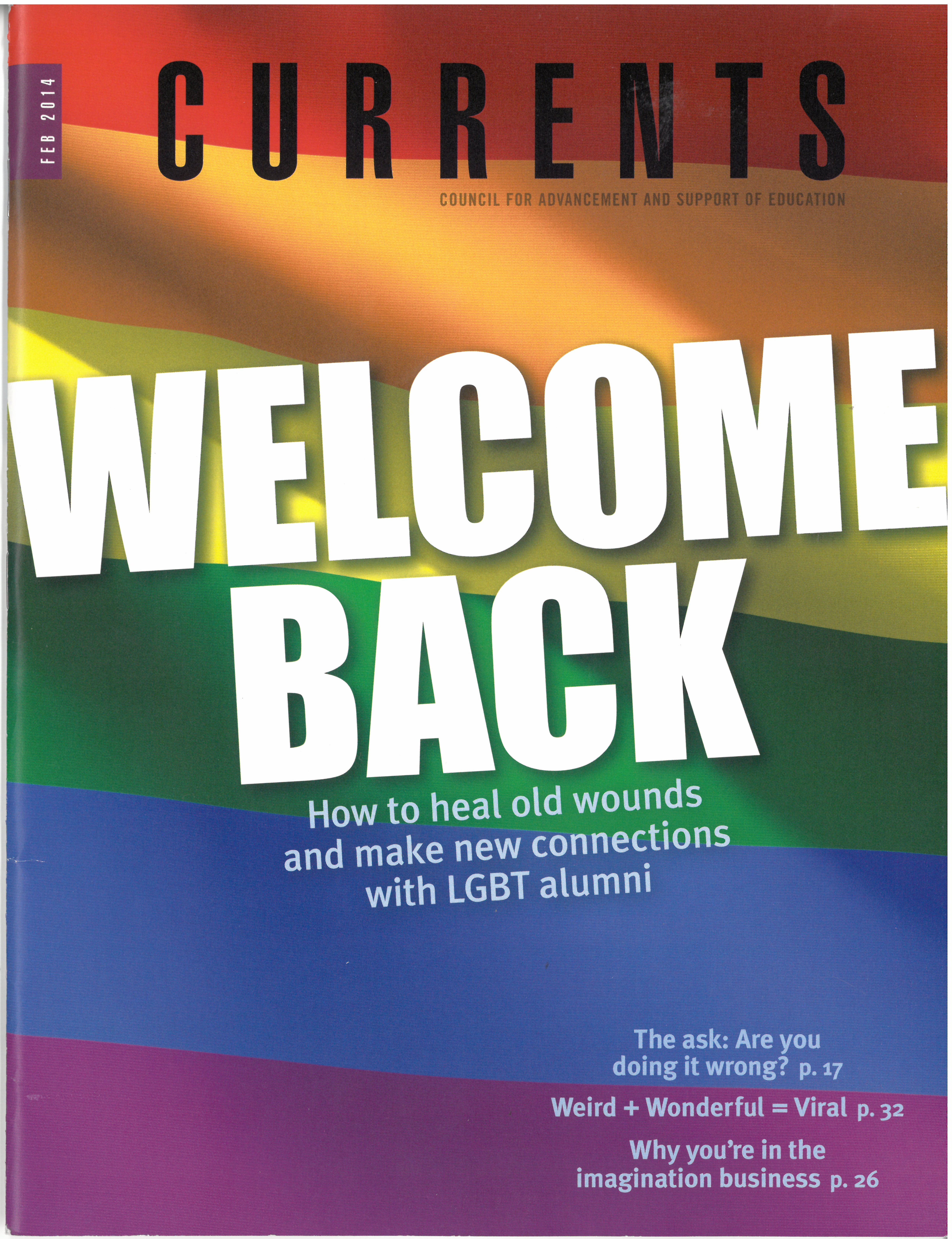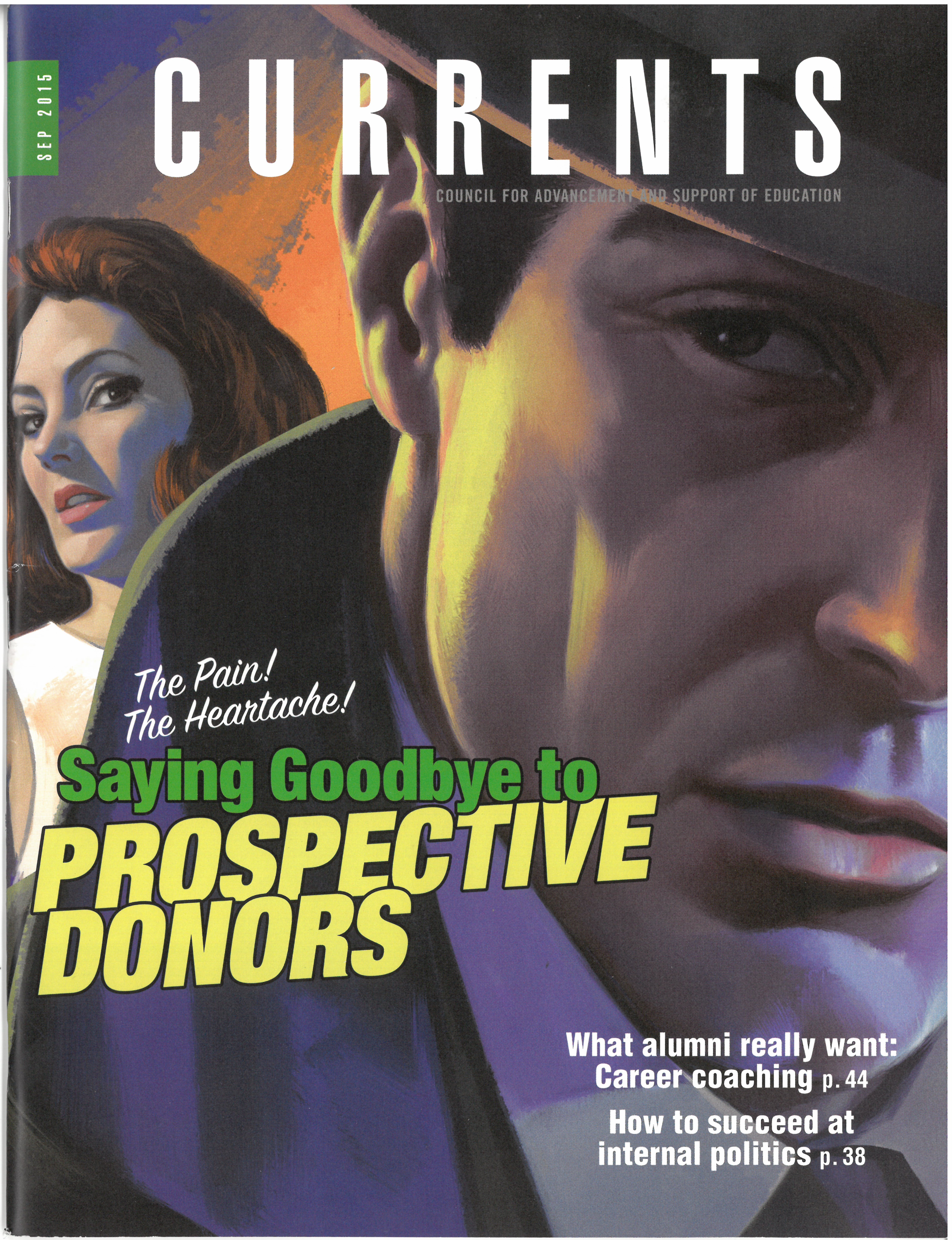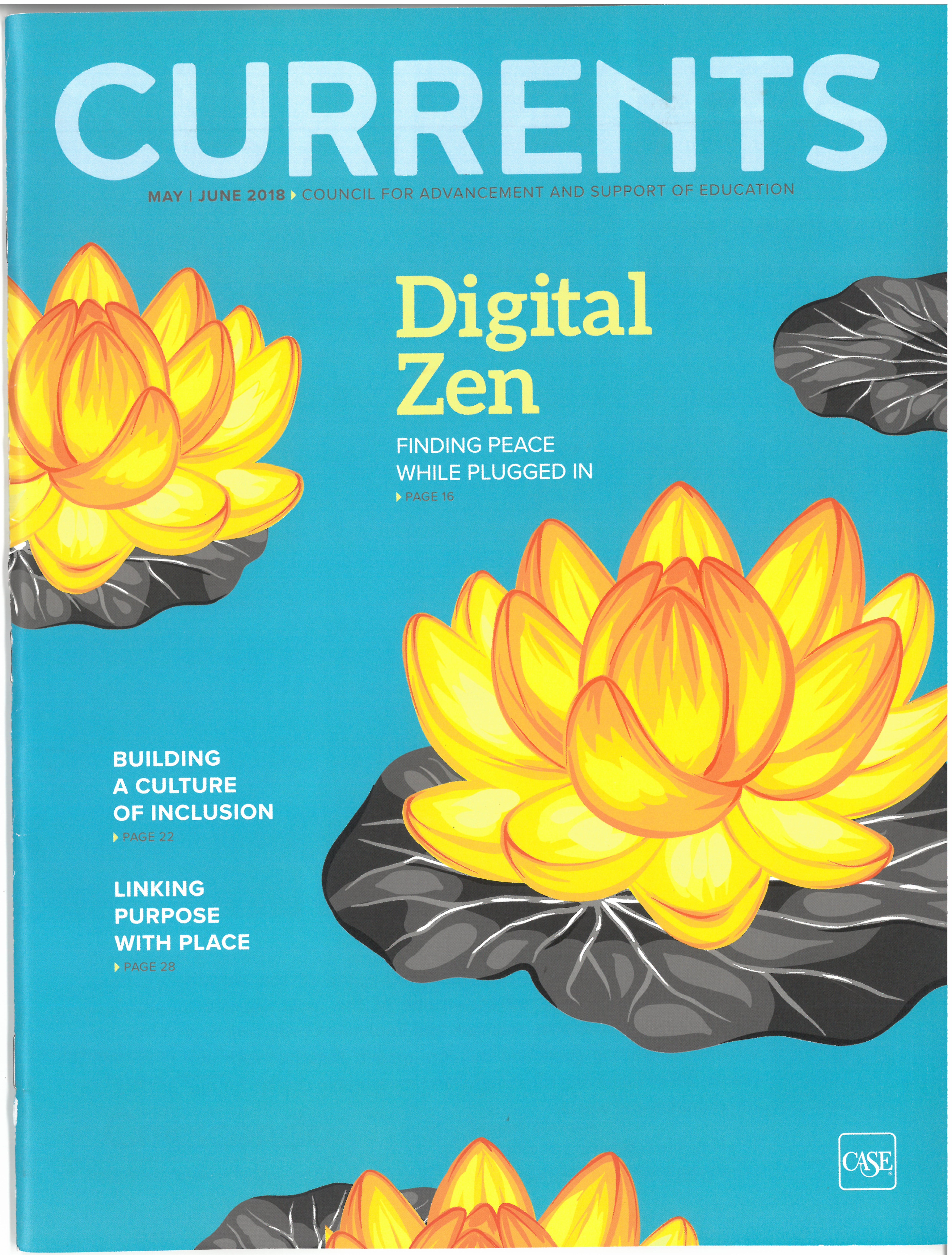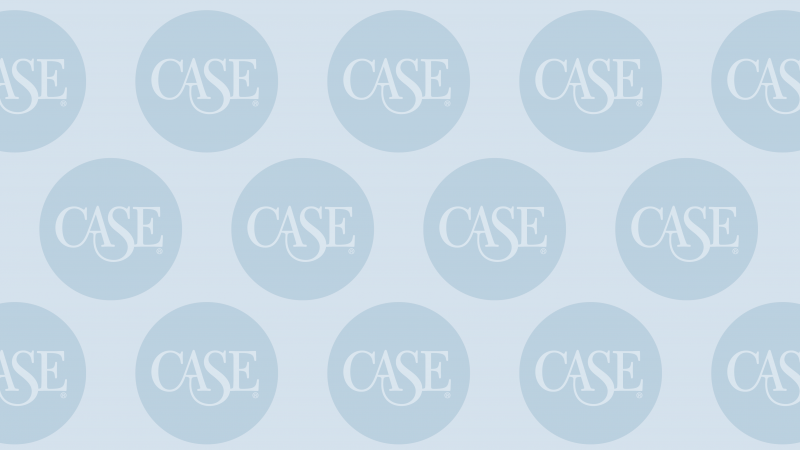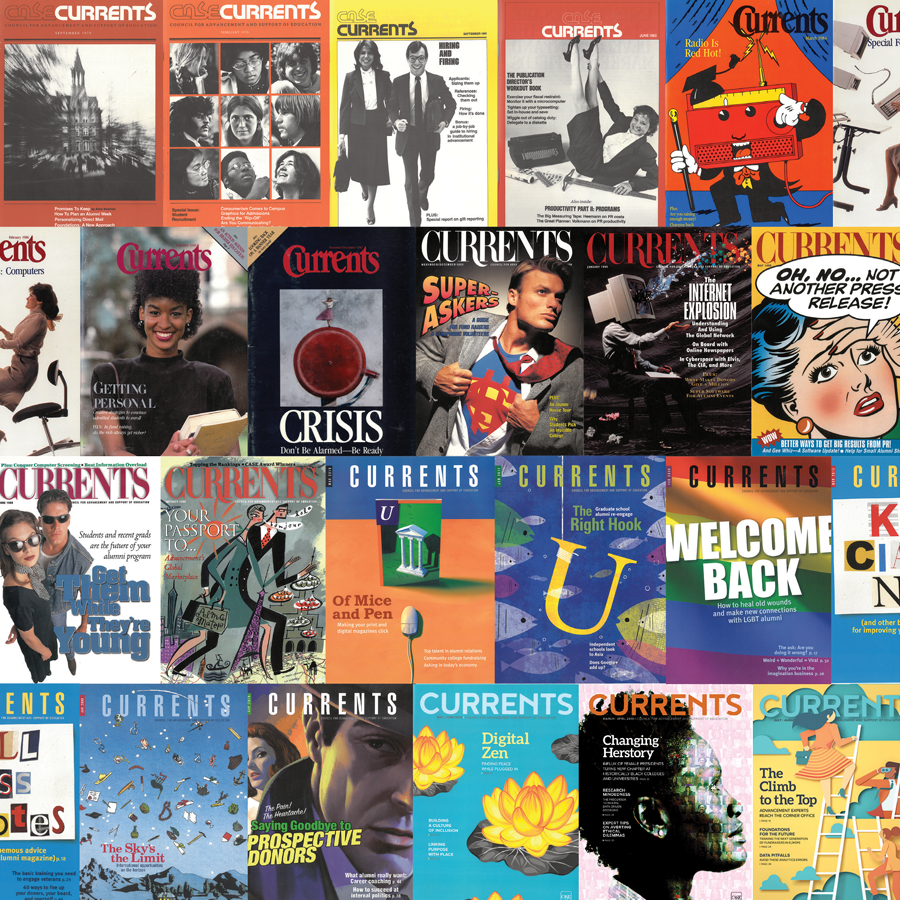
Every Cover Tells a Story
True to its name, Currents keeps members up to date on the issues of the day—offering best practices, tips, and thoughtful discussions for advancement leaders. Now, as CASE celebrates its 50th anniversary, a look back at Currents also provides a historical record of the profession’s evolution. Our cover stories through the years show not only advancement’s growth, progress, and sophistication, but the evergreen topics that continue to define this work.
Technology, alumni engagement, student recruitment, and capital campaigns are among such topics—with more than 10 covers dedicated to each.
Student Recruitment Gets Personal
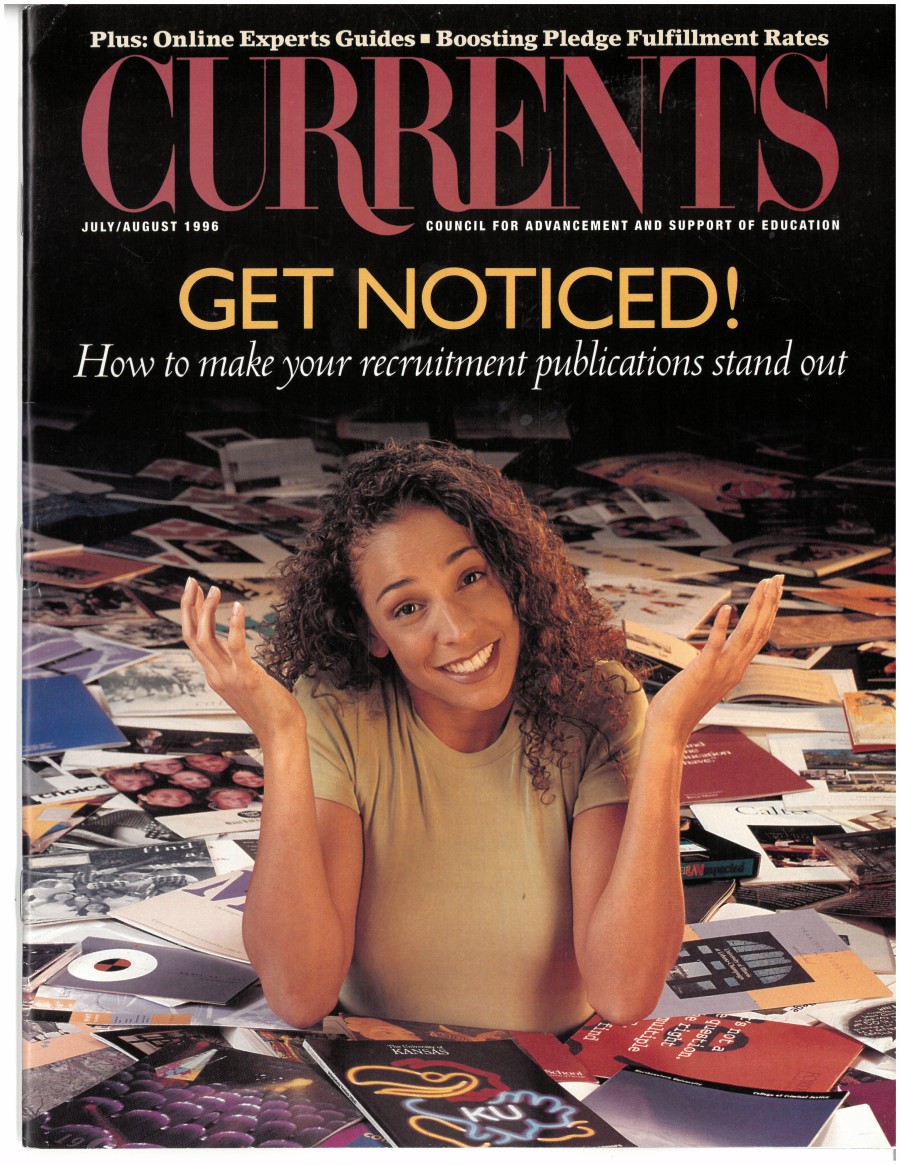
"No other trend is as hot right now in recruitment publications as the one that doesn't involve paper. During the past year, institutions have been scrambling to get electronic viewbooks on the information highway."
—Currents, July/August 1996 (“Today’s Recruitment Trends”)
Student recruitment was one of the most popular topics for special issues and cover stories during the 1970s and 1980s.
A February 1978 special issue on student recruitment included articles on the importance of market research and advertising, consumerism, and some new ideas that included four-color viewbooks, billboards, and how to produce a slide show.
According to the lead article, “Student population is the number one development (or advancement) problem of any educational institution. If you don’t think so, consult those little pie charts in your president’s report, and see where 60% to 90% of your institution’s income comes from.”
Later that year, in November, another special issue on the topic offered articles on attracting transfer students, using alumni in recruiting, and writing recruitment materials. One article asked, “Is it time for ‘marketing’ to become an accepted word on college campuses? For years it has been a sellers’ market for the nation’s colleges and universities. As we all know, the game has changed.”
The cover of the December 1980 edition highlighted a special section on recruitment with the words, “Before you advertise, know your market.” It also offered articles on attracting adult students and recruiting two-year college students.
Special issues continued in the 1980s with a November/December 1983 edition that offered advice on how to write and use a marketing plan, the importance of students and alumni as ambassadors, and a showcase of “punchy” publications.
The May 1987 cover highlighted recruitment publications. The issue offered articles on turning your admissions data into publications with pull and how to use focus groups to zero in on what prospects think. One article urged readers to “introduce your institution with a search piece that gets results. Too often colleges don’t understand what makes them marketable. … Identify what makes your institution different from all the others.”
One year later in September 1989, the magazine cover line highlighted, “What’s New and What Works in Minority Retention Programs.” The single most important part of retention programs? “Day-to-day efforts to make minorities feel wanted.”
The June 1990 cover highlighted a special section: “What’s in the Cards for Student Recruitment.” One article in the issue covered demographic shifts; another article looked at three institutions that strengthened their recruitment efforts for Hispanic students.
The September 2007 issue included a special section with the cover line “Power of Attraction: Student Recruitment in the Modern World.” The article, “Dispelling the Millennial Myth,” stated, “The whole idea of marketing to a generation runs counter to the best contemporary practices, which emphasize tailoring messages and content to the needs and interests of the person.” Another article explored the interplay of the viewbook with the web, and another asked, “Are admissions consultants marketers or matchmakers?”
By the 2010s, and the start of the 2020s, marketing articles in Currents were focusing on targeted marketing, prospect research, digital advertising, social media campaigns, microsites, texting, and other forms of personalized communications.
Campaigning Through the Decades
Fundraising topics naturally dominated many Currents covers (almost 50!) through the last five decades. The most popular fundraising cover themes were annual giving and campaigns. Currents cover stories show how campaigns have evolved over the years.
The March 1979 special issue on the capital campaign was a complete primer with 10 articles covering such topics as the role of the president, rating your prospects, moving off a campaign plateau, campaign PR, and enlisting and training campaign volunteer leaders. One article asked readers to consider, “How can the annual giving, deferred giving, and capital campaigns work together?”
Capital campaign planning was the focus of the November/December 1986 edition of Currents with the cover line “The Blueprint for Success.” In one of four articles on the topic, six considerations for a feasibility study were outlined: the campaign’s case; leadership; the goal; the institution’s ability to raise the money; timing; and the plan of action.
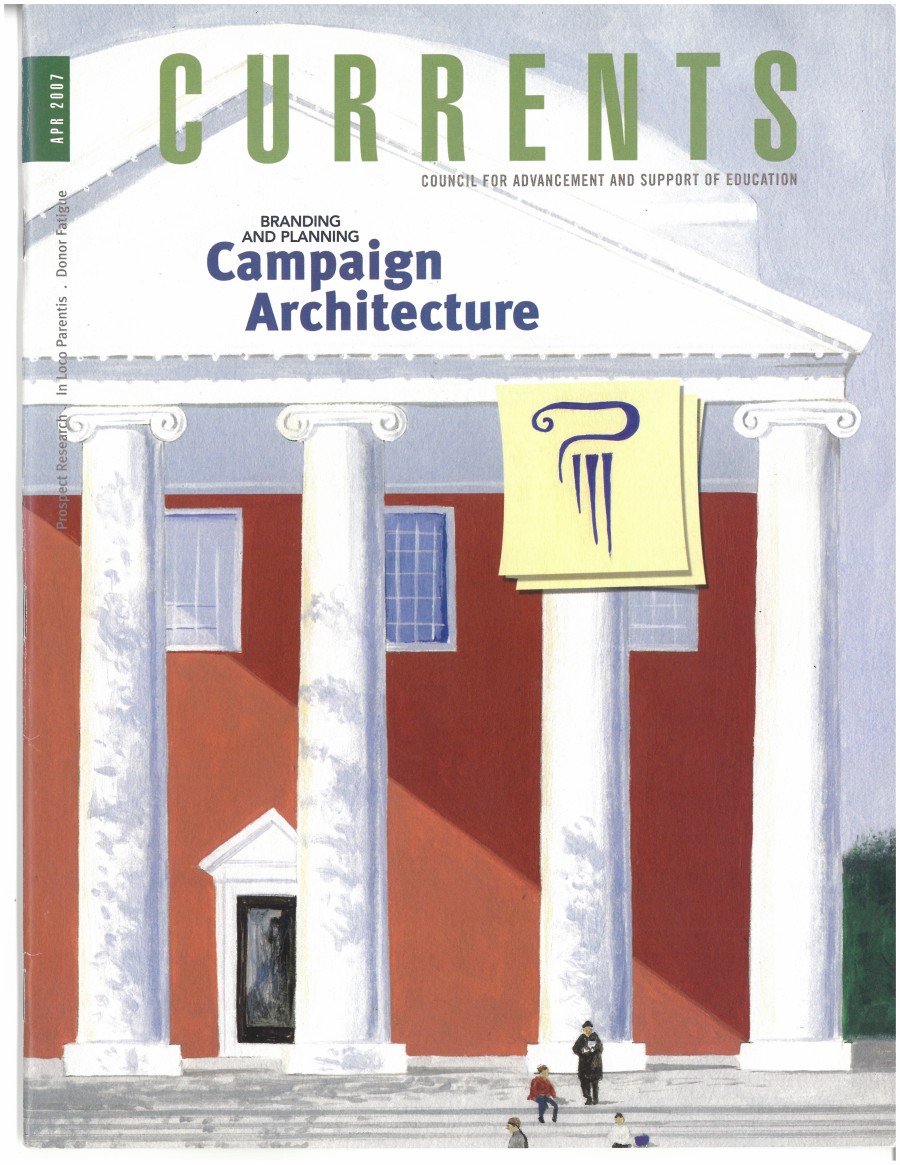
“All campaigns have to answer three questions: Why this institution? Why these projects? Why now?”
—Currents, April 2007 (“Brand Opening”)
The October 1992 cover showcased an illustration that played off the idea of political campaigns with the words “Campaign ’92: Campus Communicators Make the Case and Win Support in Today’s Fundraising Drives.” A special section outlined the challenges of the 1990s, including bigger goals, the move from capital campaigns to comprehensive campaigns, the longer duration of campaigns, and fewer major gift prospects.
The decade saw several more special sections on campaigns. In one such cover story, “Ready or Not? And other questions to ask before plunging into a capital campaign,” the top question was, “Do you know why you are doing this?” Readers were urged to consider if they really need a comprehensive effort over multiple years, or would a focused, project-specific mini campaign better accomplish their institution’s objectives.
The cover story for the April 2007 issue featured campaign architecture (branding and planning), with the message to readers that “Campaigns are opportunities to define, position, and enhance campus brands.”
The next year’s April issue acknowledged the Great Recession of 2008 with the cover line “Campaigns in this challenging economy?” Readers learned that campaign communications are even more essential during challenging times. As one interviewee noted, “We are determined to … do as much cultivation as we can so that when the economy turns around and people are able and willing to make a gift, we’ll be there.”
By 2012, the economy was recovering and Currents kept pace. The March cover story noted that “institutions are raising record sums of money, but there are challenges on the horizon. As the small slice of wealthy donors gains importance, fundraisers also need to work on cultivating other donors—and keeping all donors and volunteers engaged for the long haul.”
Currents continues to highlight the innovation in campaign planning as CASE members continue to launch loftier, longer, and inspiring campaigns that often exceed preset goals. Readers today share their tips and learn from colleagues.
Alumni Engagement Measures Up
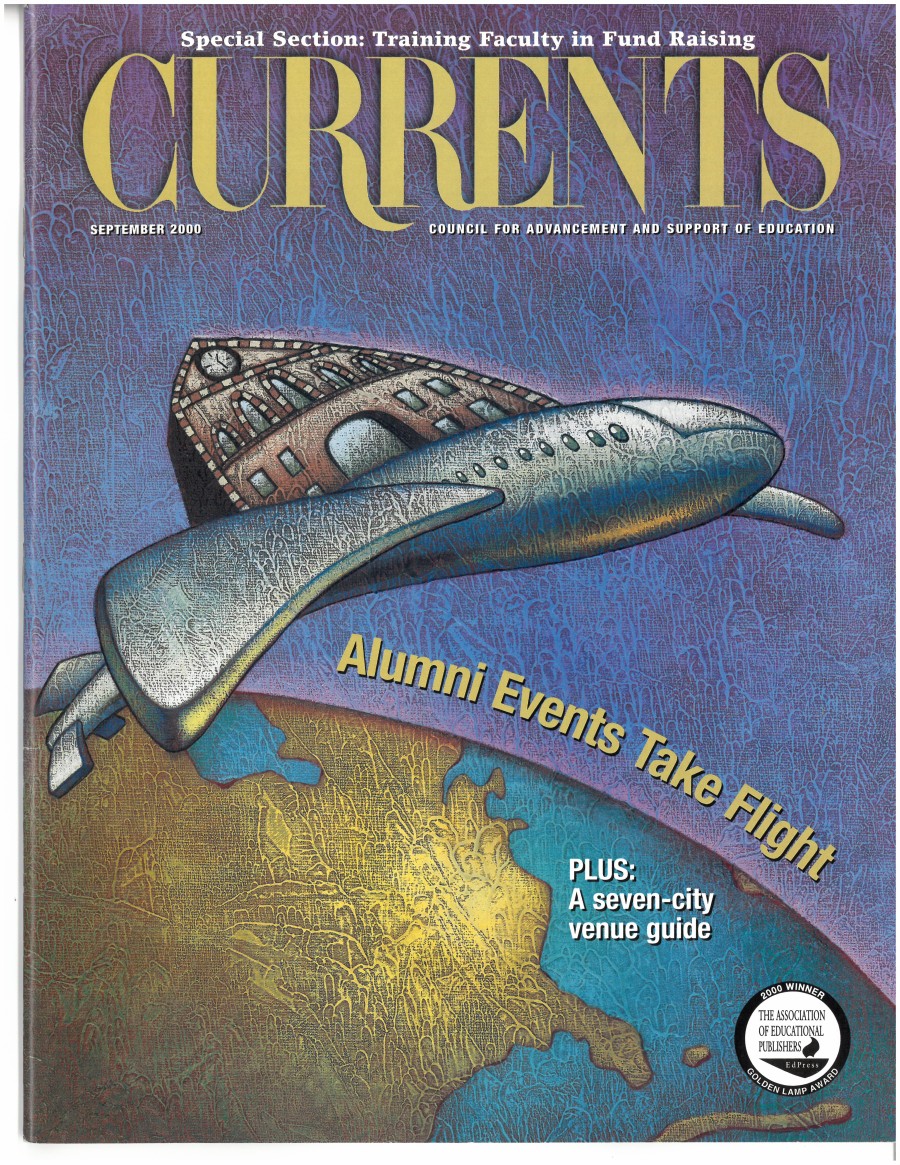
"Have a clearly defined purpose for your event; keep it simple; host it in a special place; feature compelling people; and whenever possible, take students along."
—Currents, September 2000 ("Road Shows")
From the rise of affinity groups to the strategic use of data, CASE documented the growing sophistication of alumni relations through more than 30 Currents cover stories throughout the last 50 years.
The long history of alumni relations dating back to the formation of the Alumni Society of Williams College in 1821 was noted in the May 1979 special issue. Alumni of the Massachusetts, U.S., college stated their purpose: “That the influence and patronage of those it has educated may be united for its support, protection, and improvement.” The lead article in the issue noted, “That statement seems as valid an alumni association objective today as it was more than 150 years ago.”
The issue featured 14 articles on such topics as working with alumni boards, attracting new alumni through continuing education, working with your president for good alumni relations, and adding more education to your travel programs.
A running theme through the decades of alumni relations magazine covers was the need to acknowledge diversity and affinity alumni groups. The January 1983 cover had the headline, “They’re Only Young Once: Involve recent graduates for tomorrow.” Later that year, the April cover read “Hispanic Alumni: steps to engage them.”
In April 1990, the cover story highlighted “Serving Alumni Through Special Interest Groups.” The March 1995 magazine came with a four-article focus on promoting diversity in alumni relations, including how to help alumni “heal old wounds.”
The May/June 2004 magazine featured a cover story titled “Sonic Boomers: Listen to Older Alumni.” The January 2012 cover featured re-engaging graduate school alumni. And a February 2014 cover highlighted the need to connect with LGBT alumni.
Looking to the future was another recurring theme. An April 1983 cover story, “The Decade Ahead: Planning in the Alumni Office,” predicted that student/alumni demographics, revenue needs, and technology would be key shifts. A September 1998 story on the future of alumni relations gave this advice: “The key is to arm ourselves with good research. Look for new ways to offer traditional activities. Keep a marketing focus. Find what interests your alumni.”
“Redefining Alumni Relations” was the cover story in May/June 2005. It urged readers to “eliminate the barriers between alumni relations and development to take advancement to the next level. Today [alumni relations staff] are playing more significant roles in fundraising—even as they stress the importance of carefully nurtured alumni relationships.”
That integrated advancement approach came up again in May/June 2010 with a cover story on alumni relations and career services partnerships, and in May/June 2012 on alumni relations and student services joining forces.
In the 2020s, Currents magazine has kept up with one of the biggest revolutions on the alumni relations front: metrics. Articles have explored how measurement in alumni relations can go beyond participation rates to include volunteerism, meaningful experiences, communication, and philanthropy.
From the Advent of Computers to Artificial Intelligence
A bold, light blue cover left no doubt about the topic of a September 1978 special issue of Currents. Set on top of an image of now archaic punch tape (strips of paper with punched holes that encode information) is one word: COMPUTERS. From the cover story: “Sooner or later, you and your institution will face the computer. These devices continue to get smaller in size, larger and faster in data capacity, and less expensive.”
The issue included a glossary of 125 computer-related terms including byte, card reader, console, floppy disk, mainframe, scrolling, and word processor.
Computers continued to be a popular cover theme in the 1980s. The March 1983 cover story urged readers to consider that “computerized operations have become so essential that a development officer who is not well informed in these areas will find it difficult to be a fundraising leader.” The February 1986 cover line, “Byte-Size Guide to Life with the Computer,” brought readers to a story in which they learned, “Computers can be used for storage and retrieval of gift and biographical information, prospect tracking, proposals, trip agendas, and lists for any purpose.” The article also boldly stated, “The computer will never replace file cabinets.”
Three cover stories in 1997 focused on technology. In March, the topic was “high-tech public relations,” offering readers content on “how to plan your best pitches, groom an electronic guru, and try out creative new communication computer tools.” It predicted, “The World Wide Web is far from ready to replace TV as a news source. But the hits on your home page show that visitors want to learn about your institution by whatever electronic means you can throw at them.”
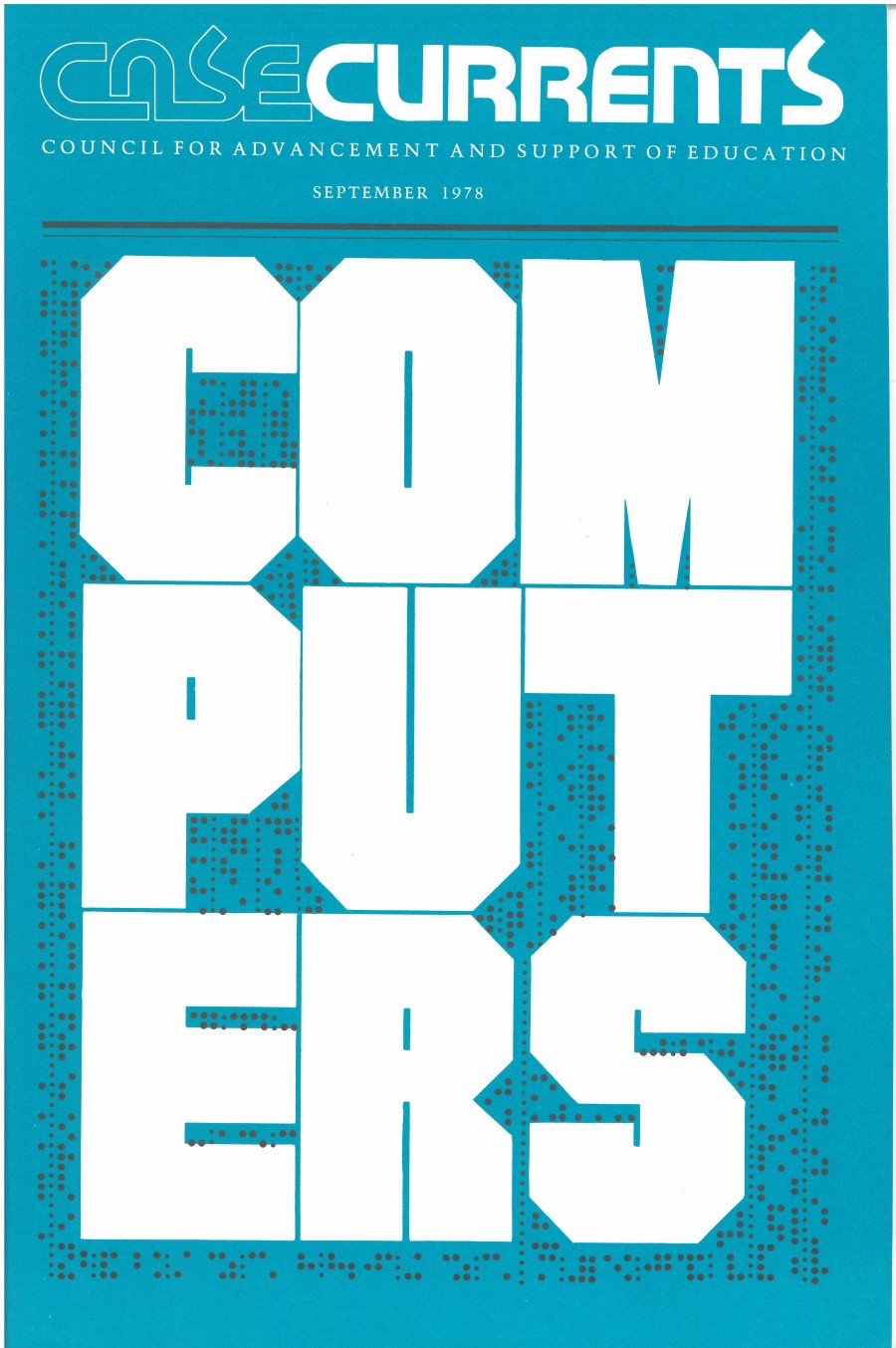
“Computers are terrible taskmasters. They are stupid and do only what they are told. You have to learn to communicate with them, to know their capabilities and limitations.”
—Currents, September 1978 (“Considering a Computer?”)
The June cover featured, “What’s Ahead: Trends and Technologies for Advancement Services,” and offered a two-part series: “The Paperless Development Office” and “Gifts Without Grief.” Readers learned “how credit card and [electronic] transactions can make gift processing easier today, while online gifts may be the trend for tomorrow.”
By the July/August issue, the word “computer” was fading away in headlines about technology as advancement professionals were moving toward full acceptance of online operations. The cover highlighted “The Internet’s Next Wave,” with a three-article special section. One helped readers “Untangle the Web” with tips on finding out who your visitors are, what they want, and how they want it. Other articles featured intranets and the “Dark Side of the Web.”
And in April 2002, the cover read, “Online Giving: What’s Ahead.” The story acknowledged the still uncharted territory: “Development officers are wary of the path ahead, but some continue to innovate. Most institutions are looking for a peer model to emulate.”
Five years later, the March 2007 cover announced the progress made on this front with the words “Out of the Box: Online Fundraising Takes Off.” The cover story offered best practices as “online giving has recently taken its place as one of the required tools of the trade for educational institutions and development professionals.”
The February 2010 Currents cover, featuring a bumblebee illustration, declared, “Tech Takes Flight: The buzz on CRM [customer relationship management], data mining, and the digital age.” The upside of the rapid development of high tech for educational institutions, according to the lead story, “is an unprecedented opportunity to talk to constituents as individuals.”
At the start of the 2010s, social media was on the scene, and advancement professionals were figuring out how to make it part of their engagement, recruiting, and fundraising strategies. The September 2010 cover featured a pool with a diving board and the words “Taking the Plunge: Advancement dives into social media.” In this issue, readers could review results from a CASE survey about social media with responses from 600 institutions.
By 2018, social media had become so mainstream that the May/June issue offered a cover story titled “Digital Zen.” The feature story offered 10 tips to safeguard your mental well-being at work. The article stated, “This 24/7 plugged-in mindset can come with a mental health cost—one that is starting to be acknowledged more openly.” Tip number two encouraged readers to “honestly assess your social media consumption.”
Today, in the 2020s, Currents continues to keep up with the rapid pace of technology advances with articles on master data management, dashboards, and ChatGPT. The need for adaptability, innovation, and curiosity is as important today as it was in 1976. And Currents will continue to stay current.
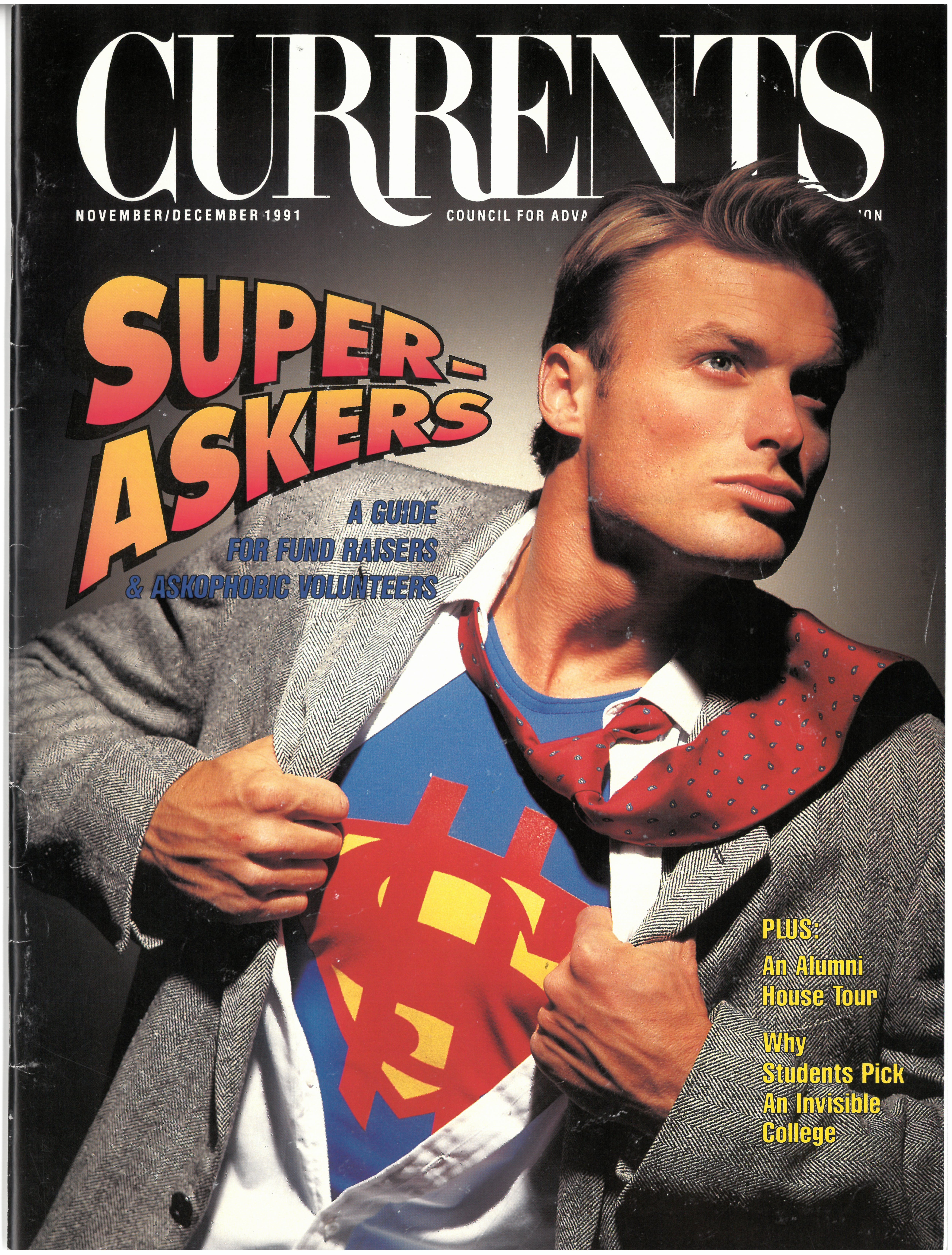
NOVEMBER/DECEMBER 1991: Super-askers: A guide for fundraisers and askophobic volunteers.
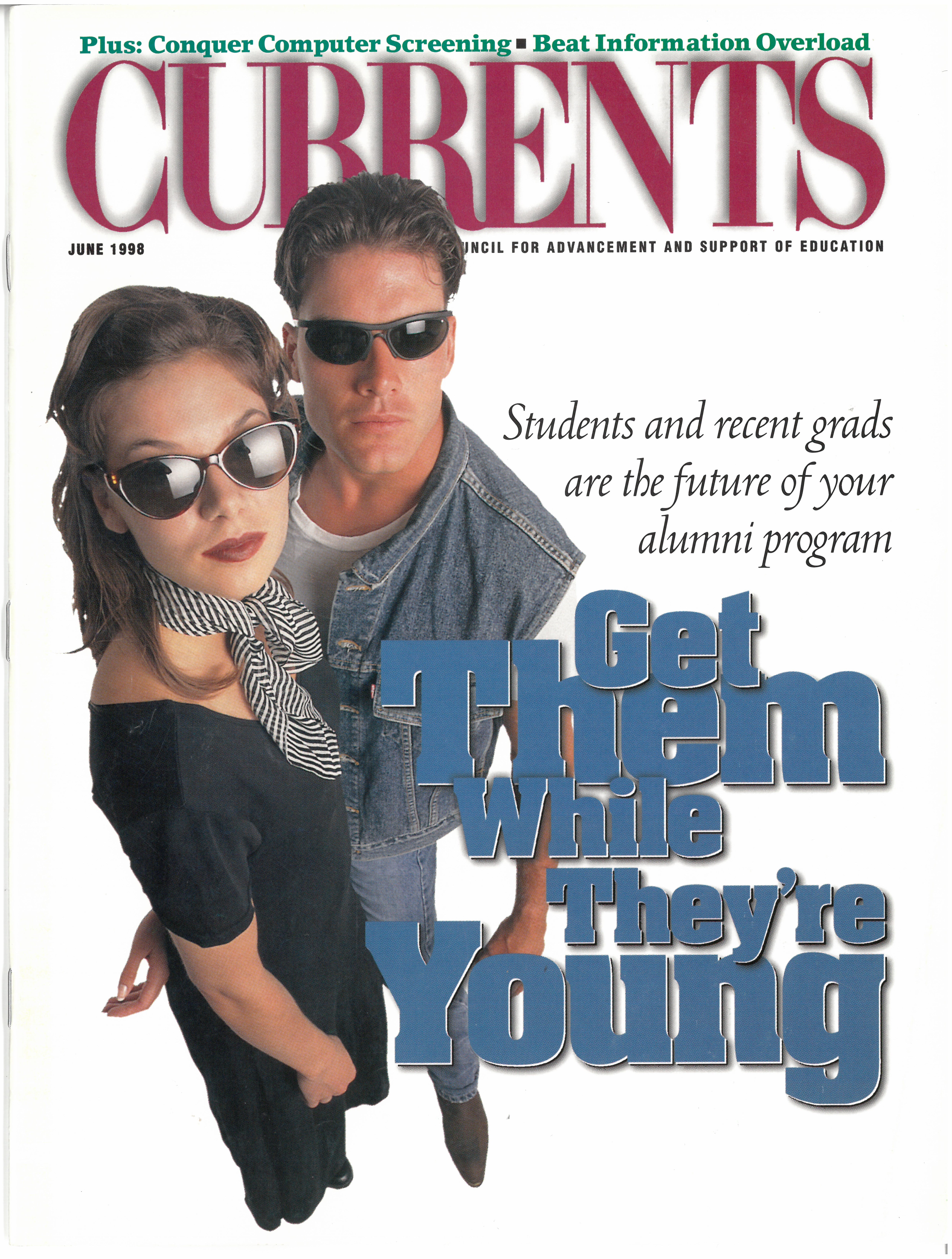
JUNE 1998: Students and recent grads are the future of your alumni program—get them while they're young.
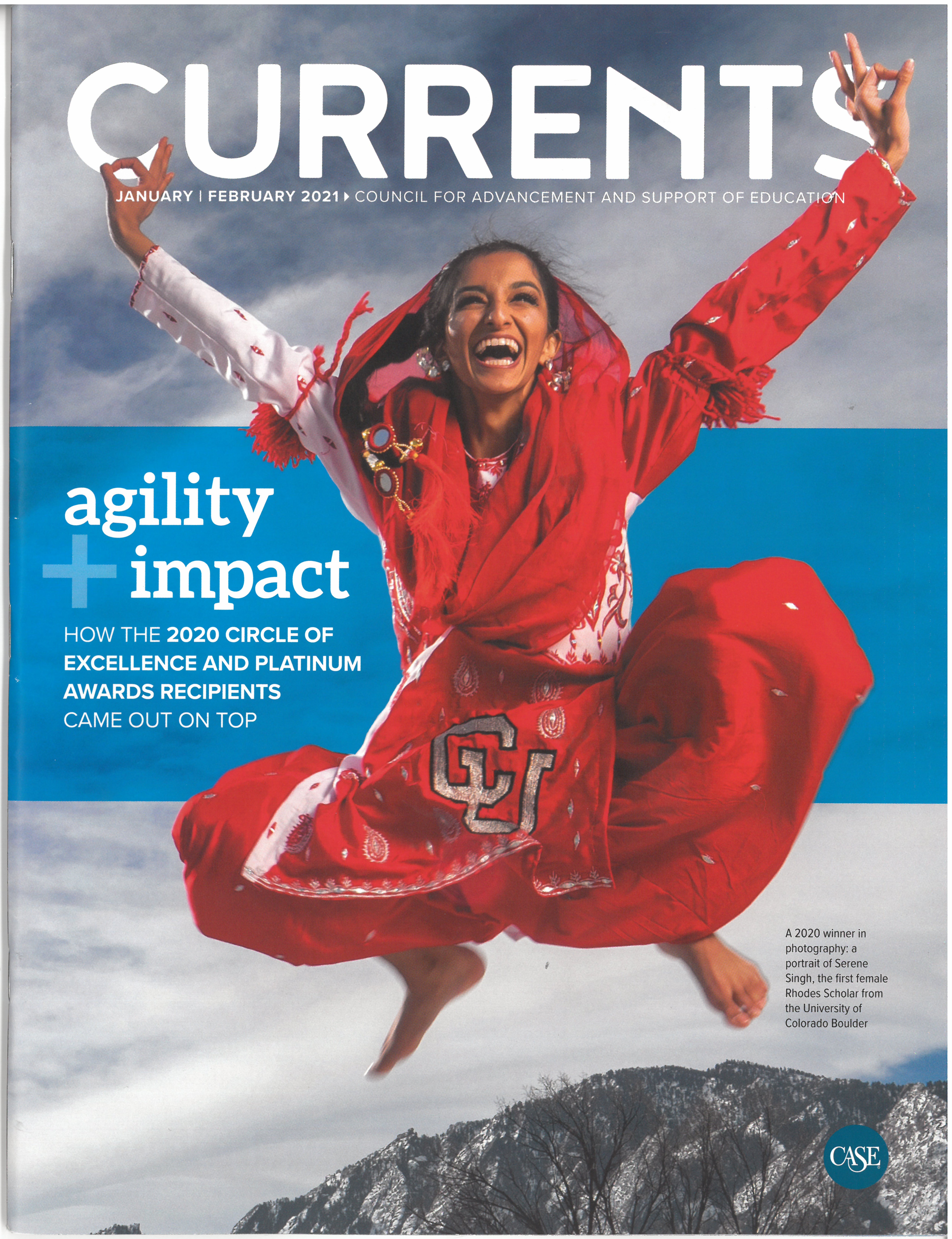
JANUARY/FEBRUARY 2021: How the 2020 Circle of Excellence and Platinum Awards recipients came out on top.
The articles here are filled with insights and advice from advancement professionals—and many were written by practitioners like you. What topics will dominate Currents covers in the next decade? Drop us a line at people@case.org and tell us what themes, topics, and articles will best meet your needs—currently and into the future.
About the author(s)
Ellen N. Woods is Writer/Editor at CASE.
Tags
Article appears in:

September - October 2024
Celebrate CASE's 50 anniversary! Explore CASE's history, global journey, and signature activities that serve the profession, like research, training, mentoring, and more.
